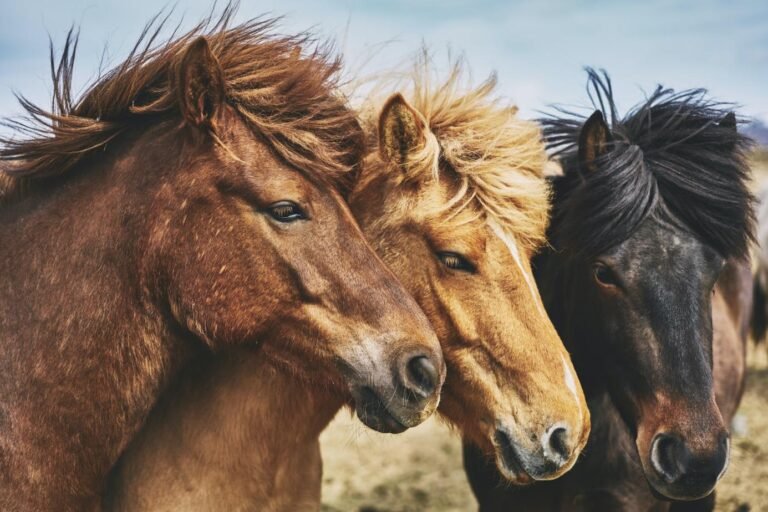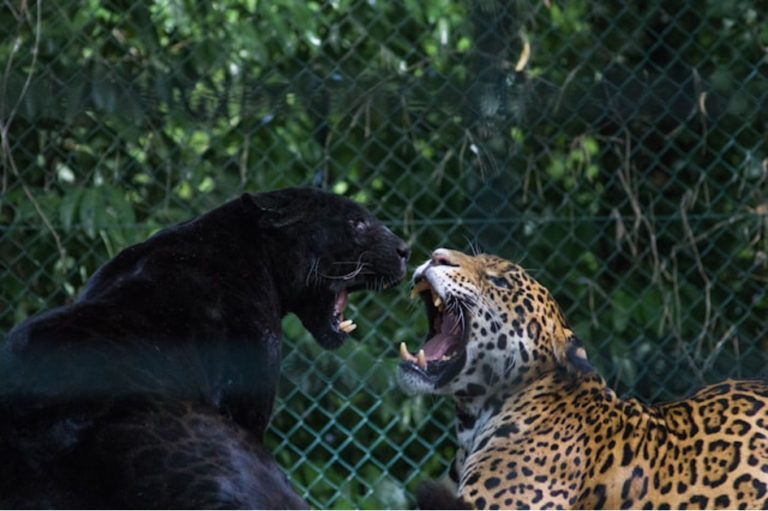The lion, king of the savannah

The king of animals owes his nickname to an imposing charisma and a flamboyant mane reminiscent of the sun. The largest feline in Africa is above all a powerful and formidable predator whose ambush and hunting techniques leave its prey little chance. Meet.
The lion: a powerful musculature
The lion (Panthera leo) is a carnivorous mammal of the Felidae family of the genus Panthera (felines) which has a very developed musculature. Its elongated, stocky body rests on thick muscular legs that allow it to bring down animals that can greatly exceed its size. A violent kick can cause the internal organs to rupture and even break the bones of its prey.

Very distinct males and females in lions
Sexual dimorphism is very marked in the lion: the male – larger and heavier than the female – measures 1.72 m to 2.50 m long from the tip of the snout to the base of the tail and weighs between 145 and 225 kilos as an adult. The adult female measures 1.58 m to 1.92 m without the tail and weighs between 83 and 168 kg. The color of the coat varies from creamy yellow to brown, with a lighter ventral side: buff in the male, almost white in the female.
lion’s mane and whiskers
The thick mane begins to grow when the lion reaches a year and a half. Varying from blonde to black, it thickens and darkens with age. In practice, the mane proves to be a good bulwark against scratches during fights between rivals. Like other felines, the lion sports whiskers called vibrissae. These long, vibration-sensitive hairs help him find his way in the dark or when his field of vision is obstructed.
The savannah, its habitat
This felid lives mainly in sub-Saharan Africa. Populations are located mainly in national parks or protected areas in Kenya, Tanzania and South Africa. Its natural habitat is savannah, semi-open forests and semi-deserts. In India, the Asiatic lion only lives in one ultimate refuge: the Gir Forest National Park in the state of Gujarat.
The lion lives in a clan
The African lion is a gregarious animal: it lives in a clan or family. The surface of the territory (from 20 to 500 km2) and the number of preys determine the size of the group which varies from three to thirty individuals. This group usually consists of lionesses, young subjects and a dominant male responsible for protecting the tribe when the females go hunting. Rather lazy and inactive, the lion spends most of its time taking a nap (between ten and fifteen hours a day).
Mating: the female decides
The lion reaches its sexual and social maturity at the age of three or four years and even if it rises to the top of the hierarchy, it cannot reproduce without the consent of the female. It is by turning around him, rolling at his feet, rubbing her head against his neck, that the lioness provokes the dominant male. After a gestation period of about four months, the female moves away from the clan to give birth to one to four lion cubs weighing less than 2 kg.
Several mothers for the lion cub
Babies are born with their eyes closed. These will open after ten to fifteen days. During the first six weeks, the little ones will be breastfed by their mother who is protective and constantly on the alert. Cautious, she changes her hiding place every three or four days, carrying the infants one by one. Then they will join the group where they can suckle other females. Around the age of six months, the lion cubs are weaned and will remain with their mother for about two years, who will teach them in particular how to hunt.

Young males rejected
When the young males reach their sexual maturity, they are excluded from the clan and go in search of a new group, which avoids inbreeding. The young males – who form a tight-knit coalition – then travel very long distances without respecting territorial borders. Clans of young males sometimes try to take the lead of a troop by ousting the resident males, which can lead to bloody or even fatal struggles.
The lion, a big eater
Animals that are too fast and difficult to catch (antelopes, gazelles, impalas, etc.) are generally excluded from its menu. The lion prefers large, less agile bovids (zebras, wildebeests, buffaloes, elands, oryx). Groups can tackle giraffes, elephants, hippos, warthogs, bush pigs. When alone, the feline attacks more modest prey (reptiles, small pachyderms, monkeys, porcupines, etc.). It ingests nearly 7 kg of meat per day and up to 40 kg at one time if the hunt has been successful. It can then go without food for several days.

A skilled hunting tactician
The lion generally hunts at night, at dawn or dusk when the temperatures are cooler. In reality, it is usually the lionesses who hunt for the clan using an elaborate technique: organized in packs, they surround a previously identified herd and isolate their prey to finish it off. During the dry season, the lion often positions itself near water points where its prey will come to drink. On the return from the hunt, the hierarchy is implemented: the male eats first, followed by the high-ranking females and then the young.
No or few predators
Placed at the top of the food chain, the adult lion has no predators but can however be attacked by crocodiles around water points. On the other hand, lion cubs are particularly vulnerable to hyenas, which are also at the top of the food chain. Lions and hyenas feed on the same prey and are therefore in direct competition. If the two species try not to overlap their territories, lions do not hesitate to kill hyenas when they can, sometimes without eating them.
lion life expectancy
The lifespan of a lion amounts to 12 to 14 years in the wild, rarely more than 20 years, except for females who can reach this age. A few lions in captivity, however, have lived to be 30 years old. The males are usually killed by a young rival or, finding no more group, they die of starvation after a long wandering. The lion is a victim of both the reduction of its game (competition from humans), hunting and poaching. It is also threatened by the decline of its natural habitat, the savannah, transformed into agricultural land or pasture and on which they are hunted by farmers wishing to protect their livestock. As a protected species and although classified as “vulnerable” by the International Union for Conservation of Nature (IUCN), the lion is at risk of extinction.






